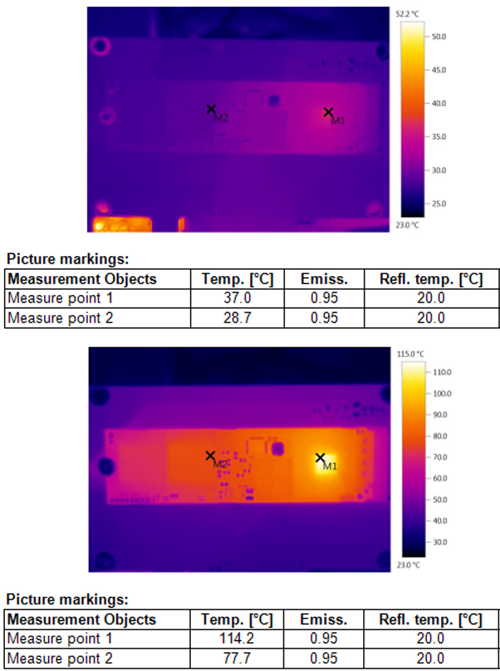Legacy Storage Benchmarking Methodology
Thermal Considerations
From time to time we'll publish an image of a bare PCB with a thermal camera. We don't do this in every review, mainly just when new SSD controller comes to market. To show the range of heat generated, we publish two images: one with the drive at idle for 10 minutes and another after writing 4KB blocks for 10 minutes.
In some environments, you might not want a solid-state drive that hits 114 °C under heavy load.
NAND flash operates best within a certain temperature range. It's still capable of accepting writes at the upper end of that spectrum, but endurance suffers. Even operating flash at high temperatures can cause issues with long-term reliability. NAND consumes power, so it does generate a small amount of heat. But most of an SSD's thermal energy comes from the controller. We look at the design to see if the manufacturer places the flash far enough away from its processor.
Get Tom's Hardware's best news and in-depth reviews, straight to your inbox.

Chris Ramseyer was a senior contributing editor for Tom's Hardware. He tested and reviewed consumer storage.
-
damric How I test an SSD. HARD RESET my computer 20 times. If the SSD is still recognized by the motherboard, then the SSD controller is worth a flip.Reply
SSDs will never wear out due to IOPs. Only the controllers break. Quit kidding yourselves. -
schizz69 Great article. Always good to get a glimpse inside the process, which Tom's is always so willing to do.Reply
Thanks Chris. -
ssdpro You'll notice all these review sites keep their tests nice and short. That way Samsung stays happy and keeps buying ad space. If they tested a drive months apart Samsung would be exposed with those floppy disk slow reads.Reply -
Gurg None of these tests give the consumer any indication of the degredation of the performance of the SSD over time. While my systems have been become more powerful and the software has been updated, the performance of my main SSD used mostly for for W7 and hardware drivers and as measured by Passmark runs has declined by 38% in about three years.Reply -
unityole @Gurg, as SSD over time, either via temperature or usage or amount of data filled performance declines. if you secure erase and install new window and it'll back to brand new performance again, tbh i think this article cover most of it, maybe you're just confused between a good ssd or uncleaned window files slowing down your system.Reply -
ykki ReplyHow I test an SSD. HARD RESET my computer 20 times. If the SSD is still recognized by the motherboard, then the SSD controller is worth a flip.
And that will be all on your first day of "How to test hardware the MacGyver way"
Tomorrow we will learn to test psu's by putting them in microwave at 50 degree C for 60 minutes while it itself is powering the microwave.
Thank you. :lol:
-
damric Reply15491425 said:How I test an SSD. HARD RESET my computer 20 times. If the SSD is still recognized by the motherboard, then the SSD controller is worth a flip.
And that will be all on your first day of "How to test hardware the MacGyver way"
Tomorrow we will learn to test psu's by putting them in microwave at 50 degree C for 60 minutes while it is powering the microwave.
Thank you. :lol:
I choked on my drink you had me LOLing so hard :) -
unityole Reply15491425 said:How I test an SSD. HARD RESET my computer 20 times. If the SSD is still recognized by the motherboard, then the SSD controller is worth a flip.
And that will be all on your first day of "How to test hardware the MacGyver way"
Tomorrow we will learn to test psu's by putting them in microwave at 50 degree C for 60 minutes while it itself is powering the microwave.
Thank you. :lol:
calm down!!

